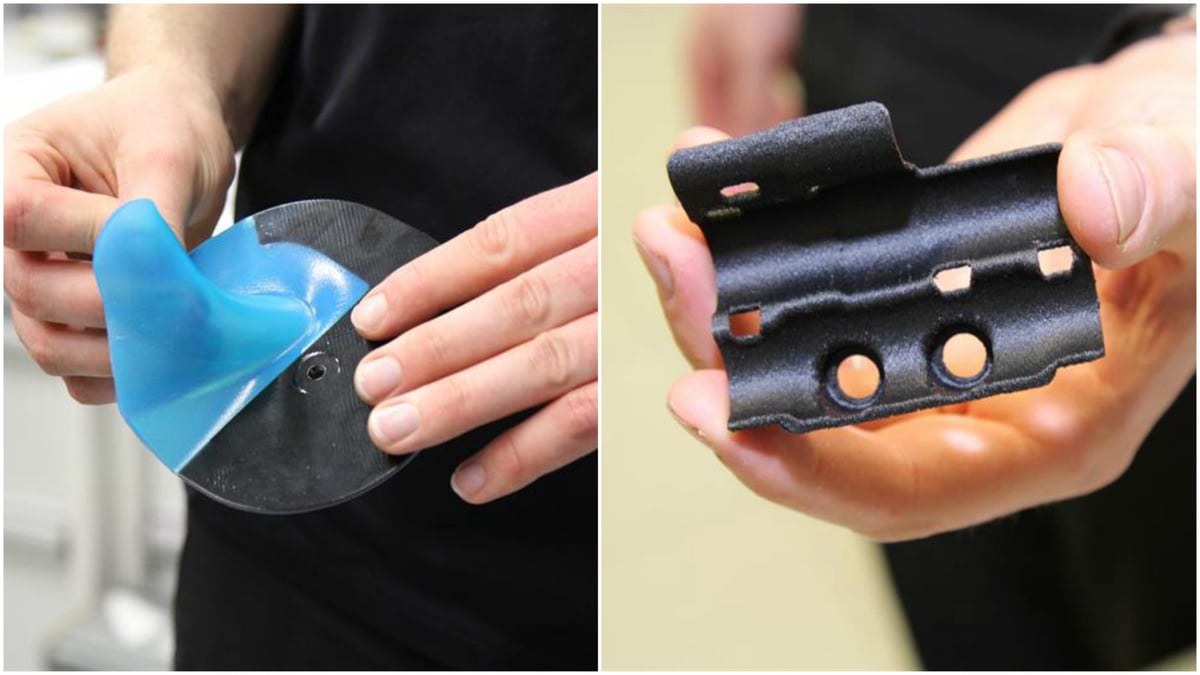The McLaren Formula One team now uses a Stratasys uPrint SE Plus 3D printer on the track for last-minute adjustments.
There’s been a noticeable shift happening at the racing circuits as the McLaren Formula One team has come up with a novel solution to replace parts ahead of a race. The team is now taking a 3D printer along to race weekends in order to fit the latest parts right up to the last minute.
Race cars are the fastest they’ve ever been thanks to state-of-the-art engineering. However, the constant pressure to fit the latest parts and enhance the performance of components has meant that many teams are fitting bits until the last minute.
Usually these parts have to be couriered in as fast as possible. But 3D printing offers the opportunity to rapidly develop and adjust components anytime, anywhere.
The McLaren Formula One team is among the first to give it go. Neil Oatley, the team’s design and development director, explains that most of design and redesign is still carried out at the team’s Woking base.
“The main purpose of the trackside Stratasys uPrint SE Plus 3D Printer is to produce parts and tooling on demand for immediate evaluation during tests and races,” he says. “This normally comprises small race-ready parts that are not highly structural but can be incorporated onto the car one or two days before the race. Crucially, this gives us the invaluable advantage of being able to fit extra pieces on the car, which we otherwise wouldn’t be able to do until the subsequent race.”

The Sky’s the Limit with 3D Printing
Often, it may not be immediately apparent which parts may be required until race day. Teams usually get to make adjustments on the Friday and Saturday before a race on Sunday. With 3D printing, any last-minute adjustments can be quickly adapted.
McLaren already have a few 3D components fitted to their race cars. Oatley elaborates:
“We might build certain parts with the objective to test them for information, the data from which can then be fed into the next design iteration. It might not be a component that we produce for the next race, the learning process of aerodynamics is very complex between what happens on the real car, in the wind tunnel and in our computer analysis, but when you combine all that, it allows us to improve things for future races.”
Right now, the team is using Stratasys 3D printing technology, which can work with materials such as ABSplus and FDM Nylon 12CF. Trackside printing predominantly uses the ABSplus material. Meanwhile, parts manufactured at the factory use the more durable Nylon 12CF.
Oatley adds that the team is also testing flexible seals with Stratasys’ TangoBlack material.
In addition to supporting its race-day ambitions, 3D printing has also been used to enhance the overall production efficiency across McLaren.
Indeed, other teams may soon be employing similar strategies as 3D printing becomes an ever more common sight at the race tracks.
Source: Eureka
License: The text of "Formula One Team McLaren Goes 3D" by All3DP is licensed under a Creative Commons Attribution 4.0 International License.